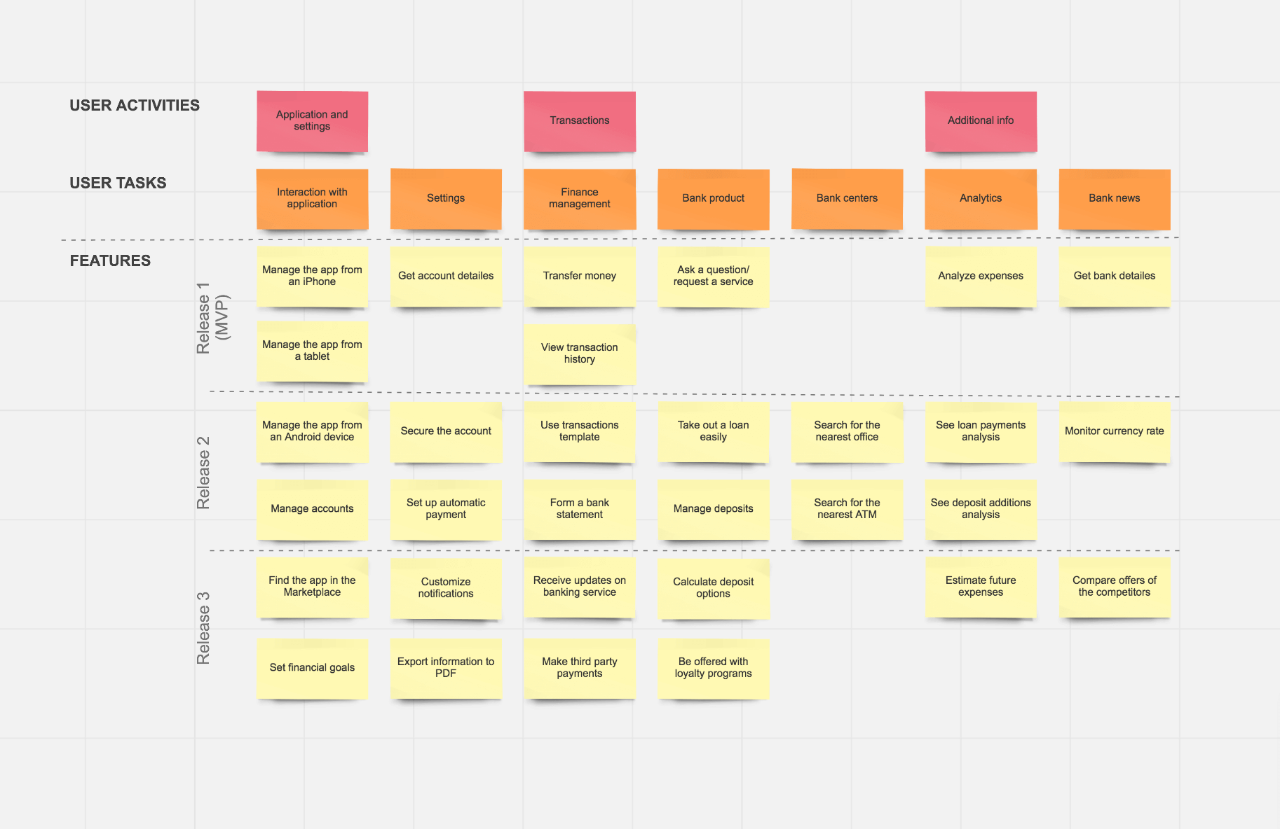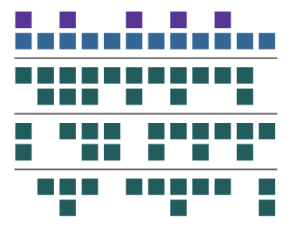Bringing user experiences to life with user story mapping
User story mapping can help you streamline workflows as well as improving user experience for your customers. Here's our guide to leveraging this method.

What is user story mapping?
User story mapping simply refers to the practice of creating a timeline of a particular user’s interactions with your product. It’s a collaborative, rapid-paced method first developed by Jeff Patton that enables development and other teams to see an overview of customer interactions. Particularly well suited to agile or Scrum approaches, the user story mapping approach brings a number of benefits to many different project phases. Let’s take a further look at the advantages of leveraging user story mapping:
1. Unify teams
Especially in the initial product vision phase, it’s easy to lose track of the user’s perspective on a service or product amongst the competing requirements and approaches of different stakeholders. This can lead to tension and conflict, which means additional delay and expenditure. A user story map allows teams with their own objectives and focus to align in order to all view the product from the perspective of the user.
User maps therefore encourage common understanding and alignment among teams, in particular if all stakeholders are included in a user story map workshop. This increases collaboration, facilitates the breakdown of silos and allows teams to advance faster with the project. This is because all teams share a common awareness of the functionality of the product, as a result of mutual agreement upon a user story map.
2. Reorganize product backlogs
In particular if there are many iterations within your project, it can be challenging to keep the product backlog organized, clear and accessible to those outside the Scrum team in question. If the time comes to reorganize the product backlog, having access to user story maps can be invaluable for managing tasks.
This is because user story maps enable teams to prioritize better. Basing workflows on user story maps mean the product backlog can be filled with user stories that actually deliver value to customers and are a productive use of development teams’ time, as opposed to simply working on endless lists of features. This is achieved by all team members understanding the context of each user story, so they can identify dependencies and gaps and work together to resolve issues.
3. Better visibility
When building a user story map, all interactions a user will have with a product are compiled. The end result is a complete overview of the product journey, or a specific part that needs focus. This provides teams with a holistic vision of the product, and all possible solutions as based on particular user needs. This is particularly useful when deciding between a number of possible solutions, because applying a User Story Mapping methodology allows teams to understand which route will be optimal in terms of time, costs and customer experience.

Creating a user story map: key questions
When approaching your first user story map, there are some key questions you’ll need to answer before getting started. Teams must ask themselves:
- Why are we building this feature?
- Who are we building it for?
- How will our solution add value for users?
- When will it be implemented?
Creating a user story map: the process

1. Build the backbone of the user story map

Start by gathering together the stakeholders, team members and decision makers and begin compiling a list of all the user tasks necessary for carrying out a particular action, such as signing up for a newsletter or making an online purchase. These tasks will then be arranged in a useful order to effectively tell the story of the interaction as a whole.
2. Go into details
Next, delve deeper into larger user tasks and break them down into more granular subtasks that the user must carry out, along with details of the user interface. This information will be pieced together from all team members’ experiences, knowledge and background via a collaborative process of reorganizing, rewriting and breaking down tasks.

3. Prioritize and organize
Finally, user stories are grouped into ‘packages’ which can be prioritized, put into sprints or put aside for the moment. The goal is always to implement viable products that provide sufficient functionality to enable users to carry out specific goals. By keeping user experience at the heart of decision-making processes, specific pain points can then be tackled based on the user story map. This is carried out by pinpointing most pressing ‘packages’ and solving those first.
Conclusion: user story mapping
User story mapping brings a number of key benefits, both for users who are provided with a more tailored customer experience, and companies themselves who benefit from improved internal workflows and efficiency. The result of employing this approach is better products, happy and empowered teams, and satisfied customers.
Want to learn more about UX and impact-driven design?
Join us at our Frankfurt office for our Women in UX: Design, Code, Create meetup on Thursday, September 27, 2018. Miriam and other experts will be sharing their knoweldge.
We’ll be discussing the impact-driven design, building inclusive and lightning fast apps and digital life in China. Click here to find the event details and sign up now!